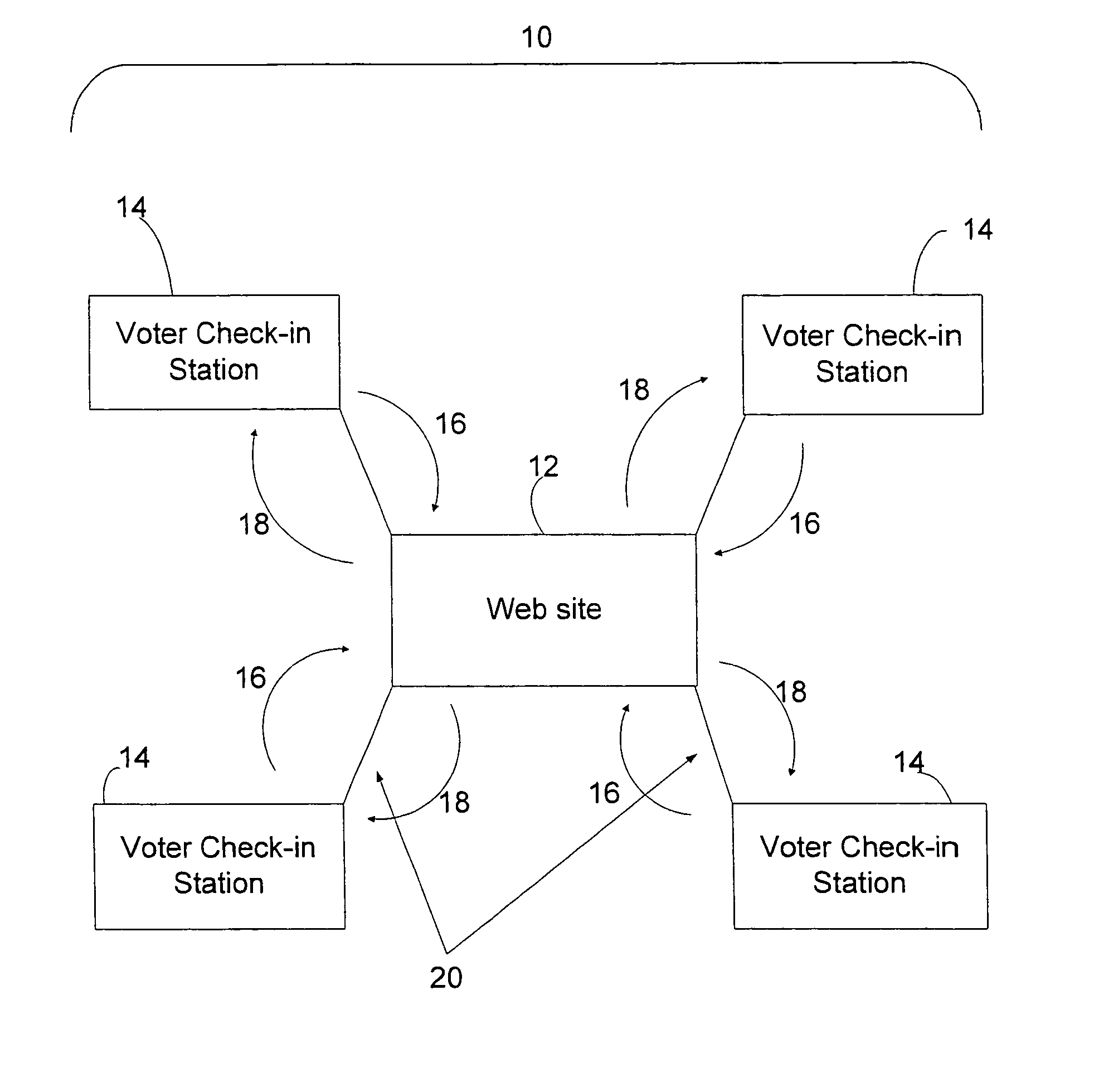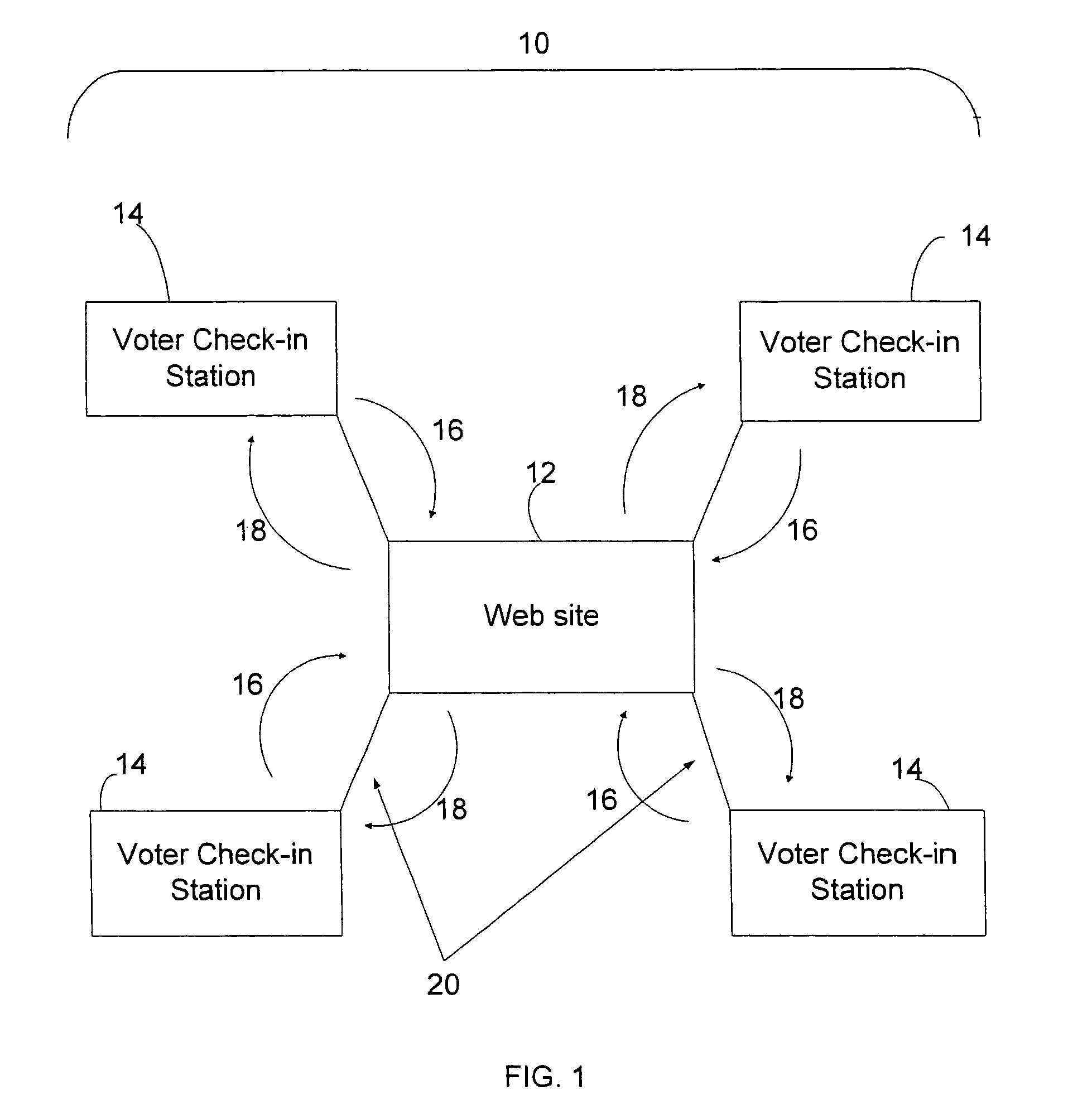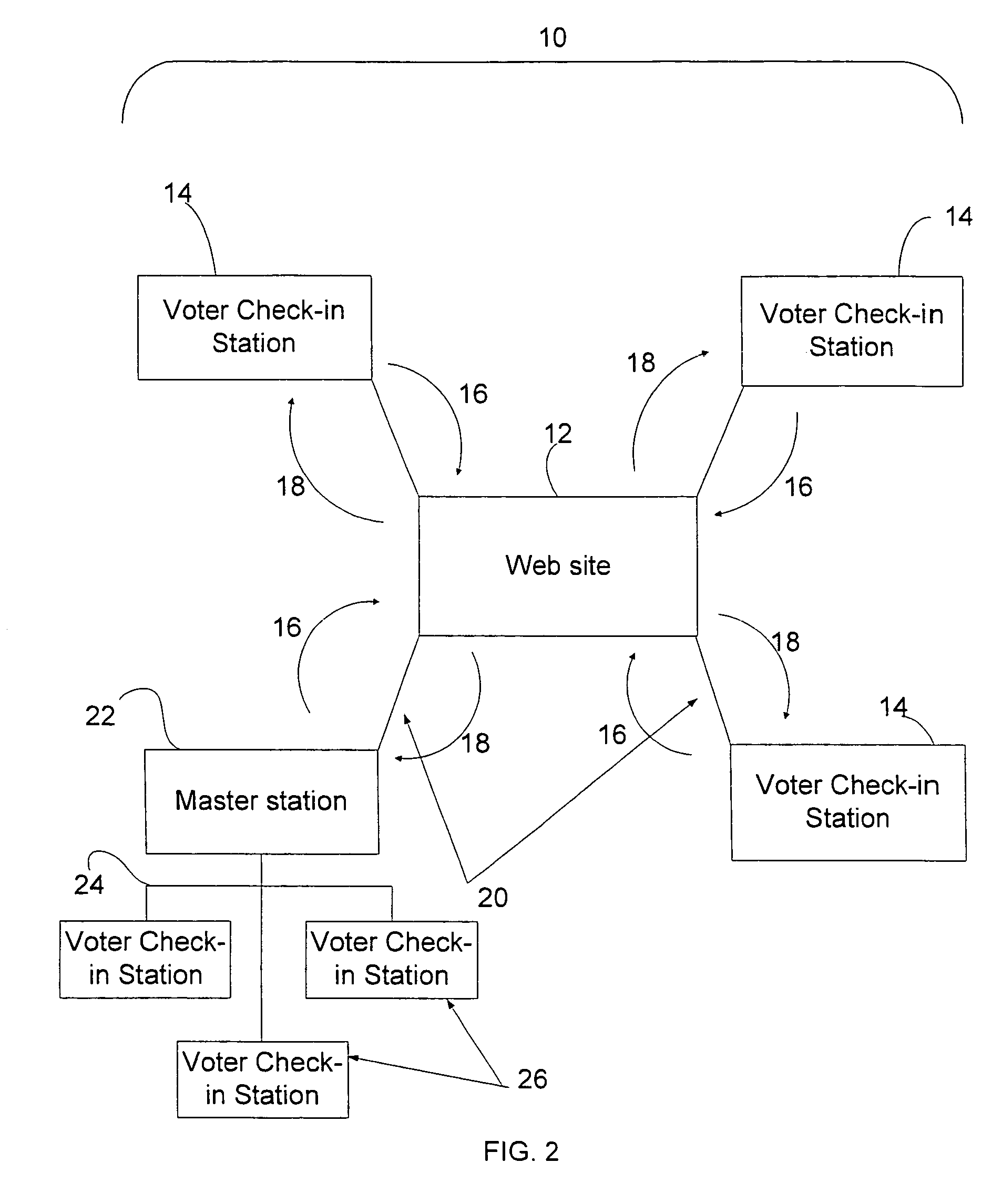Electronic poll register system for elections
a register system and electronic technology, applied in the field of electronic poll register system for elections, can solve the problems of low quality, laborious process, and laborious registration totals of registered voters, and achieve the effect of low quality
- Summary
- Abstract
- Description
- Claims
- Application Information
AI Technical Summary
Benefits of technology
Problems solved by technology
Method used
Image
Examples
Embodiment Construction
[0027]A basic configuration for a preferred embodiment of the present invention, an electronic poll register system, is shown in FIG. 1. Electronic poll register system 10 principally comprises multiple voter check-in stations 14 which are configured for connection to web site 12 by connection means 20. Conceptually, FIG. 1 can represent an electronic poll register system for a single jurisdiction with multiple polling locations, represented by voter check-in stations 14. Accordingly, FIG. 1 could represent a jurisdiction that has four polling locations.
[0028]Voter check-in station 14 is a microcomputer that is designed to display voter identity information and enable a poll worker to verify voting eligibility as quickly as possible. It holds in its local database a list of all the voters that are eligible to vote at the voting location, and also carries a list of all voters that are eligible to vote in the jurisdiction served by the voter check-in station. Examples of voter identit...
PUM
 Login to View More
Login to View More Abstract
Description
Claims
Application Information
 Login to View More
Login to View More - R&D
- Intellectual Property
- Life Sciences
- Materials
- Tech Scout
- Unparalleled Data Quality
- Higher Quality Content
- 60% Fewer Hallucinations
Browse by: Latest US Patents, China's latest patents, Technical Efficacy Thesaurus, Application Domain, Technology Topic, Popular Technical Reports.
© 2025 PatSnap. All rights reserved.Legal|Privacy policy|Modern Slavery Act Transparency Statement|Sitemap|About US| Contact US: help@patsnap.com



